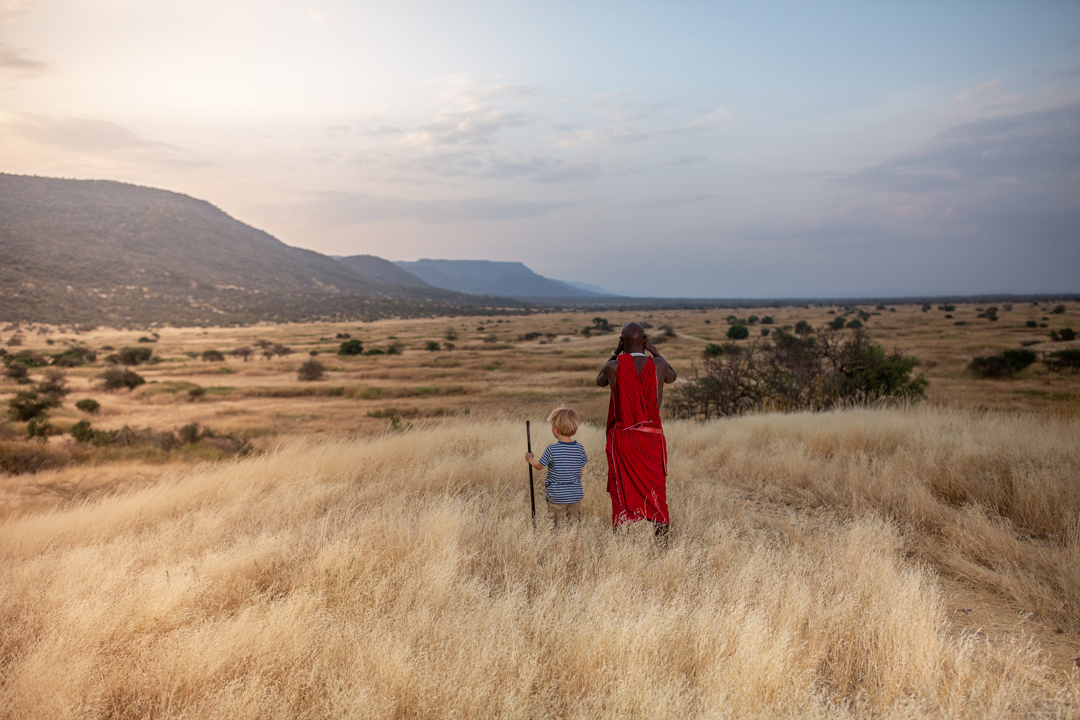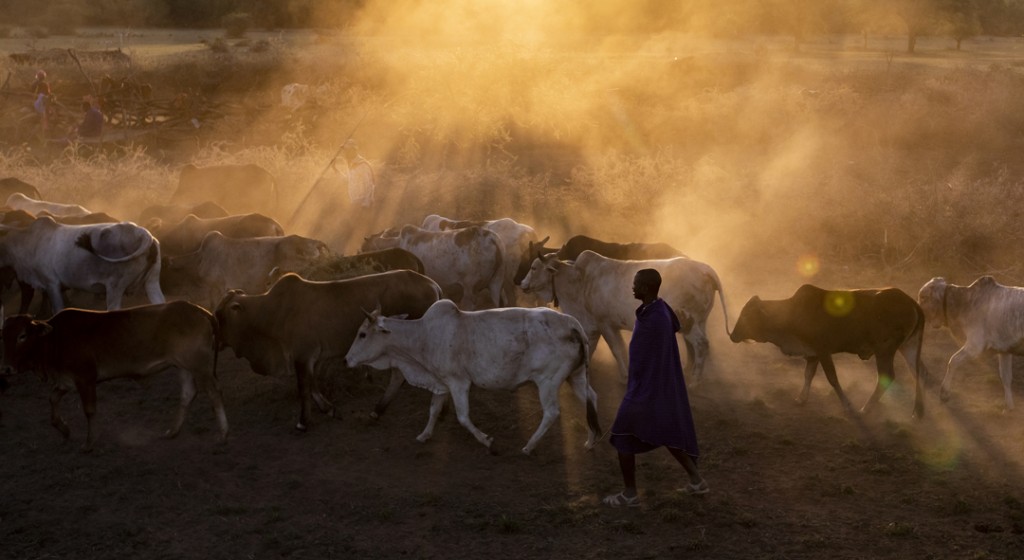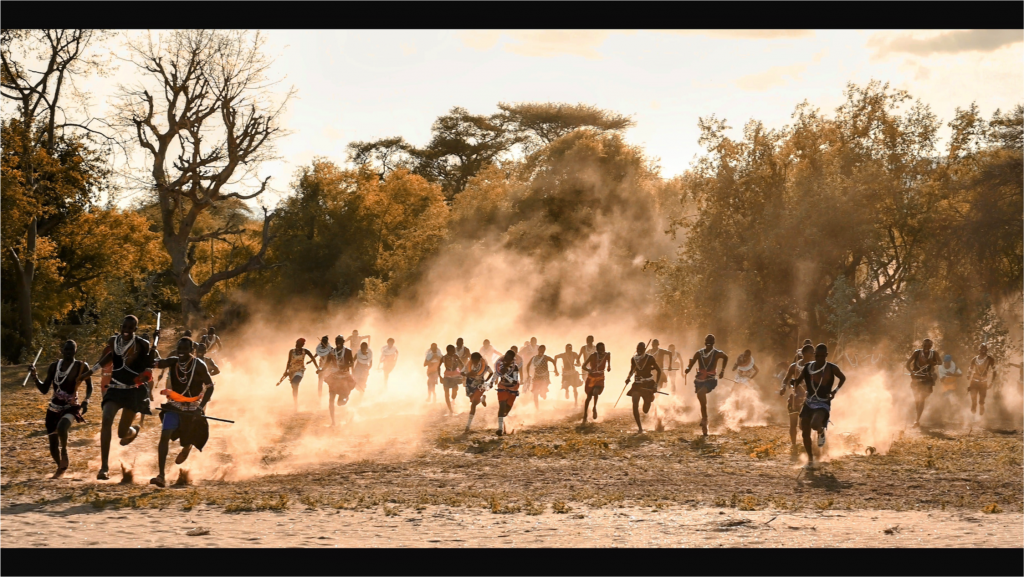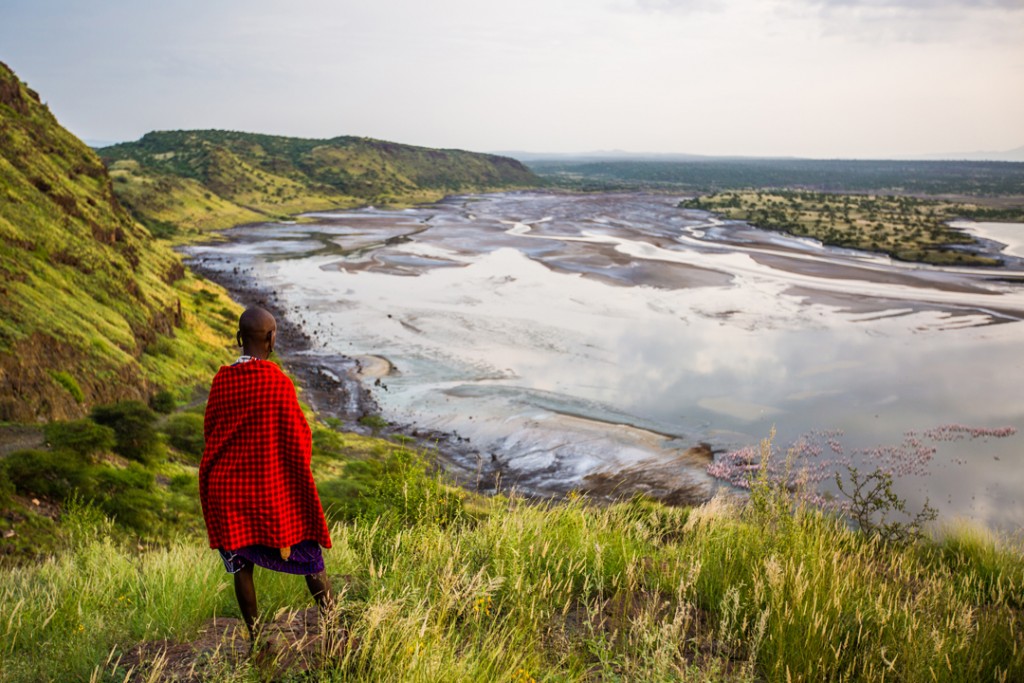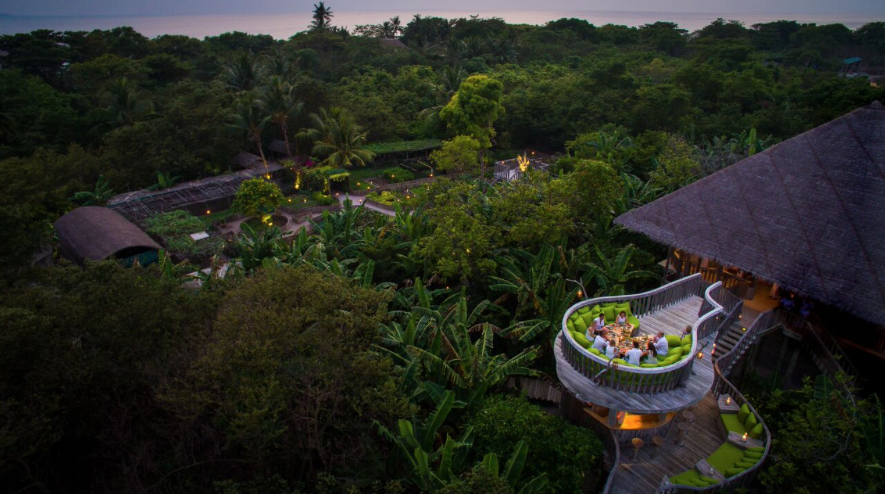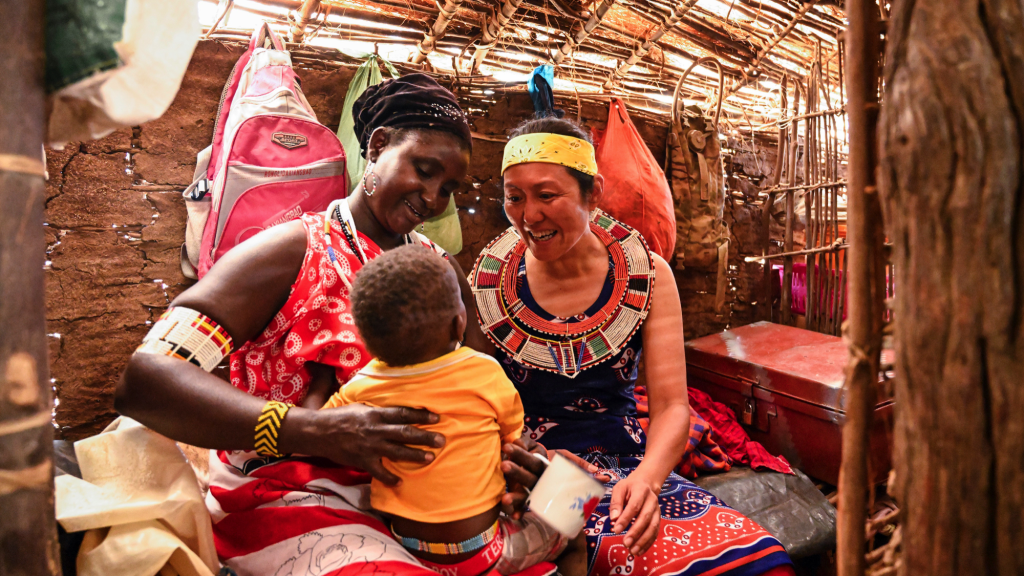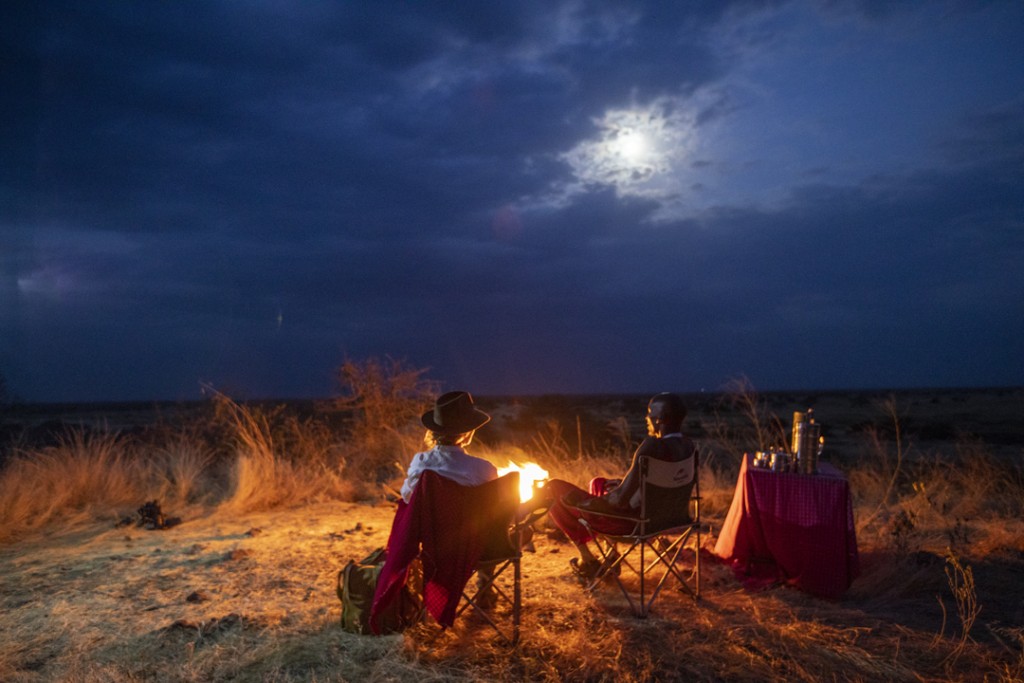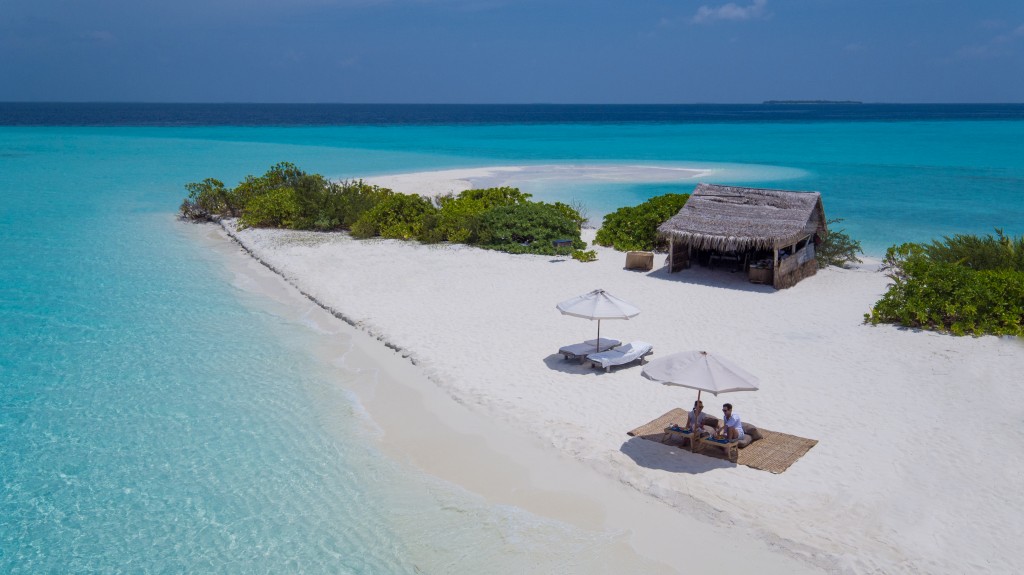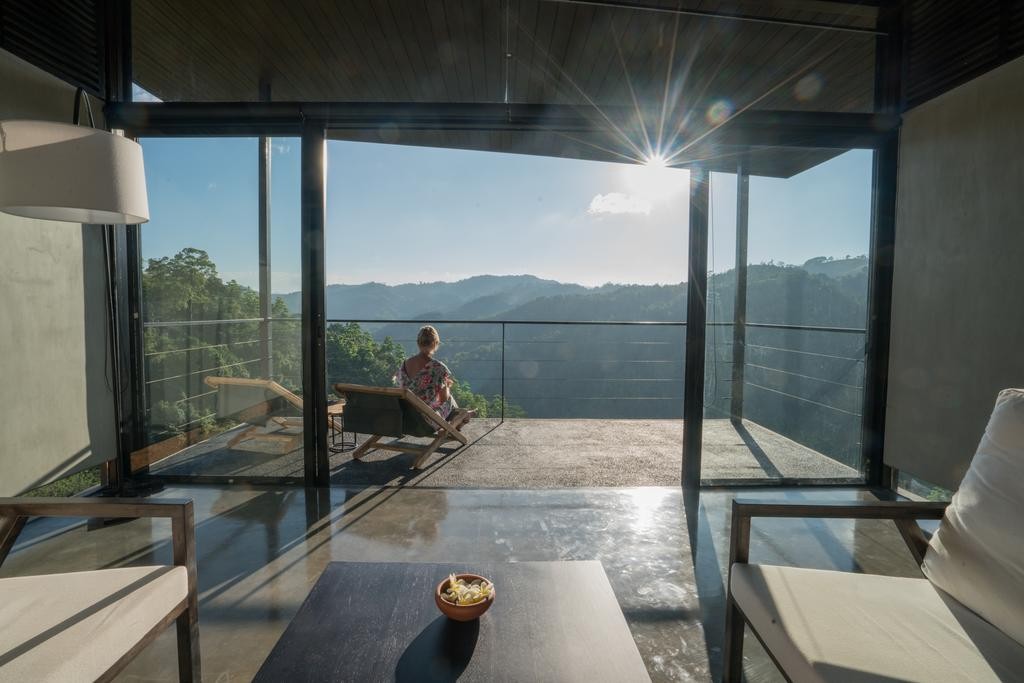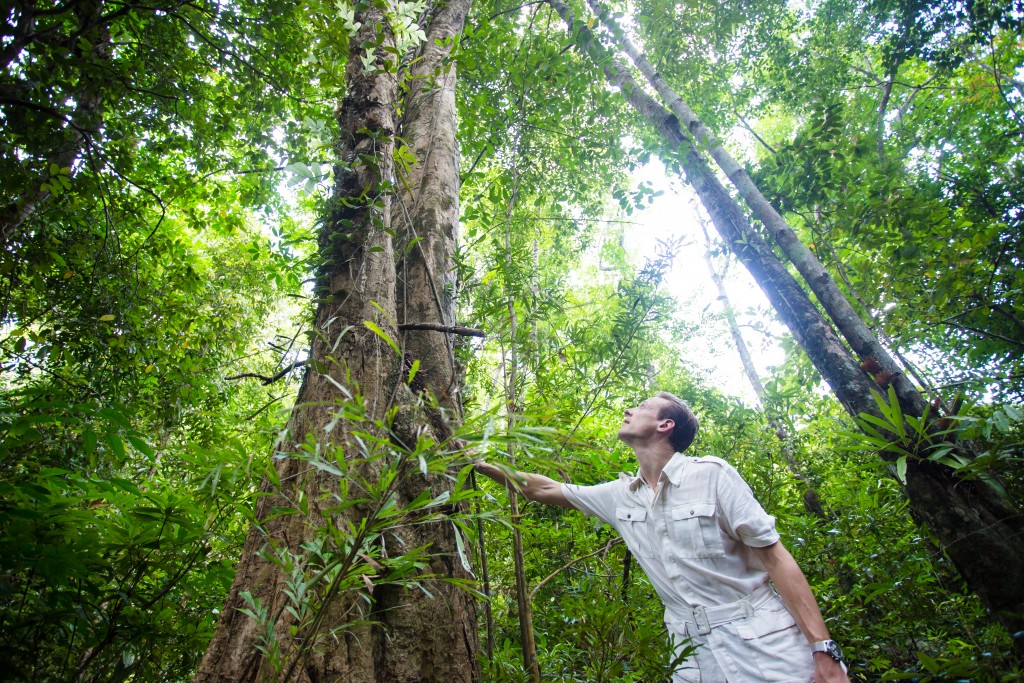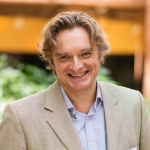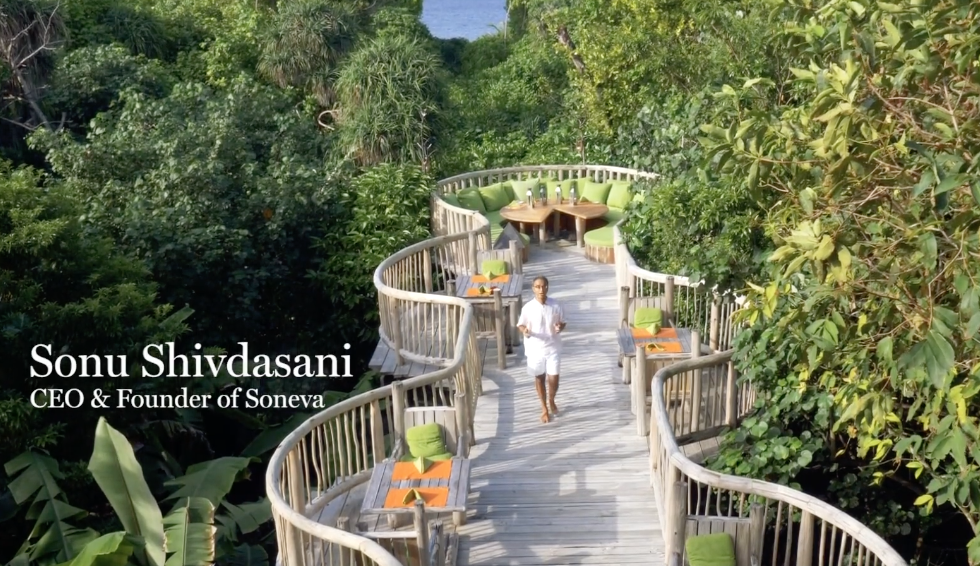Slow Travelers are seeking for unique experiences under environmental friendly way. Is this a reminiscense of our prehistoric human legacy?
Think about it. More and more we are witnessing the growth of what is so called SLOW TRAVEL. Discerning clients (and consequently travel designers) are seeking for unique experiences at remote destinations where we can find the “authentic” moments in a natural environment. The question here is why are we getting more and more these requests? What has changed in our lives and day to day schedules that is instigating our subconscious mind to ask for these activities? Aren’t we happy with the way we are living today? Aren’t we missing something from the past?
It is not new for travel designers to prepare programs either for small group of friends or family – multigenerational travel that requests unique activities. In parallel, we are seeing also a huge trend requesting sophisticated planning schedules that has to include community services. If there is anything in common about these experiences is about connecting with nature and with people, in a mindful way and with a deep understanding that we have lost throughout our daily lives. Intuitively we feel there is something missing. But Why?
During more than 5 million years we lived in what is defined the stone age, as the recollectors – hunters. This happened until 10.000 years ago when most of the human converted from this nomadic way of life into an Agricultor – sedentary style of living.
Throughout that period we were living day by day, hunting – killing the animals we needed to feed our small group of nomadic community (which were no more than 20 – 30 individuals), or recollecting the fruits and wild seeds we required to supply our energetic requirements to continue the hunting and help the move throughout the natural environment we choose to live in. This was differentiating us from the rest of the hunting mammals. But more importantly this was a perfect example of a Social – Economical and Natural ECOSYSTEM EQUILIBRIUM.
For easier understanding, I am going to SHARE two alternative plans for how you could spend a couple of days in your life. I am using two versioned examples taken from a book “Homo Deus. A brief story of tomorrow. Yuval Noah 2015”. We propose two different “experience plans” and you will tell me which one appeals better for you:
Plan 1- a “Stone Age plan”: First day 8 hrs stroll, divided in 3 slots as we feel, through a pristine and untouched forest, at the end we set the camp by the shore of an immaculate river aside of a natural waterfall, rest of day fishing activities, and dinner around the fire with our leader. Story-telling until night around the fire and overnight. Early wake up, dismantled of the camp leaving no trace of our presence, canoeing river down for 6 hours, fishing during the journey and recollection of local fruits and seeds just for feeding purpose. Camp at the end of the river by a lake. Swimming time, fun and prepare the lunch of the day. We meet some local tribes who would show us their techniques to improve the fishing, the cooking and also their use of textil materials, new for us. We exchange knowledge, stories from our nomadic experience and a new hunting technique of Mamuts with them, we do create bonds and they show us a secret place to find mushrooms, which we cooked for lunch together with the fish takes. Rest of the day we rest, and overnight at the camp, then leave the place next day as we have been told a great area for hunting around two days walk from where we are. No TV, no mobile devices, no press, nature is your guidance, you learn to read the stars, the sun movements, the forest sounds and the behave of the animals around you. CO2 impact of that day almost 0.
Plan 2- is a “Modern Average Urbanist Plan”: First day we commute for 1 hour 1/2 each way with the train or sometimes with the car to arrive to the office of the fabric we own. This brings an average of 3 hrs commuting pre day. We live in a block of apartments with another 300 households, we have a common garden area and we prefer this as it is in the surroundings of the city center (5 mill souls living there). We will work for 8 hours (sometimes 10 as we want to be promoted with a 15 % increase salary and bonus), plus 45 min for a quick lunch, and maybe, if lucky, a couple of shorts breaks for coffee. Office is located in a building where other 1.000 workers are spending their labor time. Stress overall. Nobody knows roughly anybody. unsubstantial – easy talks during elevator and with work mates. Office has strong air conditioning system that is killing our immunity system as I get usually 2 colds a year due to this. Arrive home after the commute, no time for use common garden, just a time for fast food dinner (maybe a pizza) in the microwave and go to bed as next day need to wake up at 6.00 am to be 8.00 am at work. Second day plan we go to work for a big department stores as I have a cross departamental training, another 8 hrs with same pattern as day before. Hundreds of people are asking us questions of the products to buy and some even with disgusting manners as they feel the client is the king/queen. Back home to the same apartment block. Ideally all this is to get the monthly salary to get a loan, because we want to buy the apartment we live in, providing us with the third day of activity with a “local natives” at the bank explain us how to fill the paper of the loan and sign a contract, go to the notary and lawyers and commit to a 25- 30 years loan, similar to a slavery contract for half / whole of your life. If lucky you will be able to save some money to spend 2 weeks holiday with that super plan you are dreaming all about (super plan 1) , your only incentive and motivation for the rest of the 11 months. During all this plan you make a metrics of how much CO2 you have provided to your environment and you sit down to think what should I do to compensate this negative effect after watching a National Geographic TV documental on Climate change, where AL Gore and Gretta Thunberg foresee a very dark future for humanity, despite all the efforts of politics and society leaders.
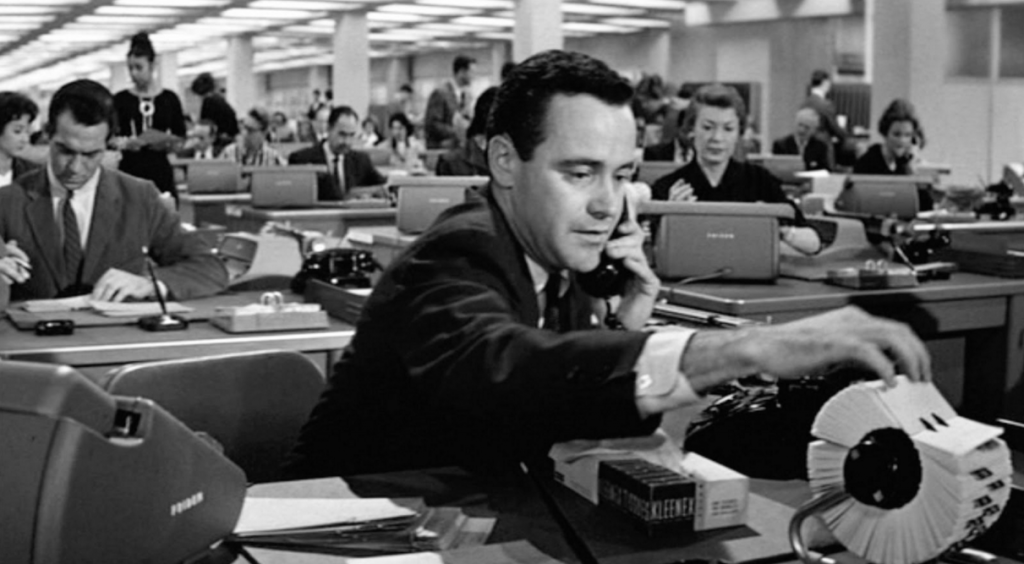
The modern times at offices. Funny image of the film ” El Apartamento” by Billy Wilder with Jack Lemmon as perfect executive with ambition
Not all, but most of you and even more the discerning travelers (no matter wealthy or not), would say what they seek as better is to chose a plan 1, which is what we would like to have during some of their holidays.
Plan 1, would be closer to what ancient recollectors – hunters where experiencing in their daily lives goes around and ecosystem equilibrium. Maybe we took out some risky moments such as hunting a Mamut or a depredator, with the objective to get some food for the week. But in essence, this is what it was all about; full contact with nature, close community group traveling with people you know in a nomad way and low impact in the environment.
We could say this is a “back to basics” plan of experiencing live. If we resume this way of life and how is this reflected into the actual travel trends, we would find the following guiding principles in plan 1:
Low Environmental impact and sustainability. As during the ancient times, our movements and our activities throughout a SLOW travel is minimum. Despite the flight and transition to destination, the rest is planned to be with low impact on environment. Even the flights there is a tendency to work on the compensation of CO2 using destinations and resorts that provide a negative footprint, trying to compensate it even in a monetary way, or collaborating with specific sustainable projects.
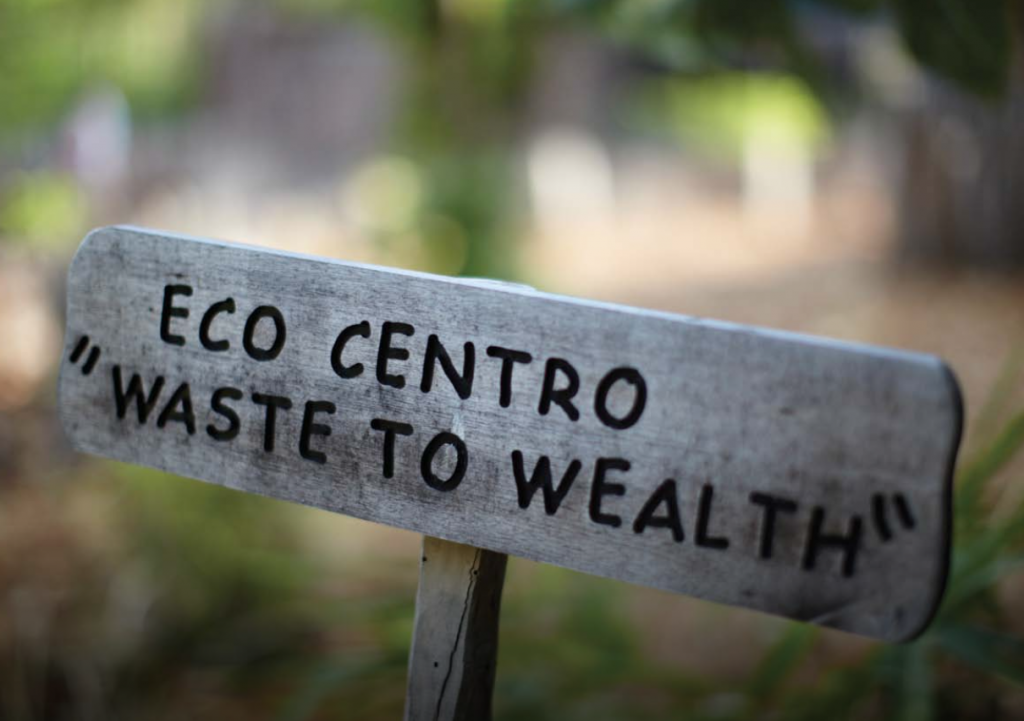
The Eco center at Soneva Fushi and its WASTE TO WEALTH program. Cero impact in nature is the objective.
Ecosystem Equilibrium. This is another characteristic of SLOW travel, once at destination the objective is to keep the equilibrium in the place, not only from a natural point of view, but also socially and economically. Aim for local consumption, helping local economy, 0 Km gastronomy or simply trying to watch and enjoy nature with the lower or 0 impact as possible.
A perfect example of what can not be done in refer to the previous two points is that visiting a pristine beach can not be an experience like the one we have seen the past years in Thailand; Phi Phi Lay beach, This site, after the famous Leonardo di Caprio’s starred the film (The Beach), became so famous that thousands of tourists after years, converted this place in the most massive visited beach in the world, harming the coral reefs, their natural ecosystem and the beauty of the place. Same happened in similar places such as Boracay. Fortunately these places have been closed now for mass tourism, allowing nature to regenerate. Lets see how much it lasts. Hopefully this is a lesson learn for future undiscovered-yet destinations in the world.
Strong community sense of belonging. This concept relates in both ways. From the SLOW traveler point of view, reflects the increased trend of traveling with families, multigenerational (father, son and grand parents). This one could be perfectly fitting with the images we can think about a group of families moving through their nomadic process. No one is left aside. Discerning SLOW travelers tend to look for the local experience, “stay with locals”,”Live like the locals” visiting local communities, sitting in the cafes or bars of the village speaking to locals, or just simply playing cards and have a drink together sharing experiences from both sides.
Sharing of common activities. This is related to what we do as travelers, basically asking for designing a plan for the family or the group of friends where they share a dinner moment, an active stroll or trekking within nature, or sport actives such as windsurf, diving or horse riding. The objective most of the times is to be part of activities that are suitable at destination. Typical moments are when we see in safari trips, the moment of dining under nature and sitting around a fire after a safari day bush, or when it is planed a stargazing experience during dinner, learning about the secrets of astronomy from a local expert who learned how to read the stars not studying at a well known university, but simply looking at the stars every night and having the knowledge being transmitted generation after generation.
Nomades & reconnect with Nature. Although there will be always a market share for the stay – lay in a hammock and do – nothing, we can see the trend of SLOW travelers looking for a plan that includes either nature activity or cultural activity. When looking for Nature, we can see great examples how @Soneva, @Lentorre lodges in Kenya are doing for their clients; Picnic island, Sustainable fishing with locals, Sustainable Surf and Kite surf activities, Night safari bushes, trekking in the jungle, or extreme diving packages. On another side there are the famous Yoga – Ayurveda programs or even meditation and spiritual retreats for goers of mindful travel.
Curiosity
This last point is very interesting, curiosity and group community mutual help is what has made us evolve vs other mammals and helped us to dominate the earth as we know now. Curiosity is what helped us to increase our knowledge and control of the environment, base in a fail-sucres trial. Nowadays, curiosity is substituted by media control, social trends of external innovators, or social- political rules created by leaders we have not even chosen. Big brother and security tvs are controlling every single step we do, even with geo localization through mobile phone.
While many people think we improved with the evolution from hunters – collectors to agriculture mode and later to the industrial & techno way of life, we feel there is a dark gap and an uncertain self confident of taking the right way in our evolution, even when technical and knowledge is reaching promising levels to make our life easier and better. But … Are we Really having a better and easier life? I leave it for your comment.
If you want to find interesting options of SLOW Travel we recommend you visit Beworld web site, where you will be able to find incredible range of products, all of them independently owned. These are located at remote – but – accesible destinations, far away from the mass tourism crowd and with a full respect on the local community. Soneva Resorts in Maldives and Thailand, Lentorre Lodges in Kenya, Marbella Mountain Resorts in Andalusia or Santani resort in Sri Lanka are perfect examples where you can enjoy Slow travel and go back in time, enjoying a PERFECT PLAN 1
For more information.
mail: comunicación@beworld.es
https://www.bemarketing.es
Redaction. Alfonso Martinez Fischer
CEO & Owner of Be World.
